
Deforestation & Greenhouse Gases: Why Do Forests Matter
The leading cause of drastic and sometimes irreversible climate change is the accumulation of greenhouse gases in the atmosphere. Trees have an exceptional ability to trap and accumulate greenhouse gases, saving the planet from overheating.
However, large-scale and uncontrolled deforestation increases greenhouse gases and adds substantially to the rise in temperature and the escalation of climate change. Thus, reducing the loss of forests and greenhouse gas emissions, along with focusing on forest cover restoration, are necessary. These actions can be accomplished by relying on modern technologies to analyze the situation from various angles and make informed decisions about saving forests and reducing greenhouse gas emissions worldwide.
What Greenhouse Gases Does Deforestation Produce?
Greenhouse gases (GHGs) trap and then emit infrared radiation, further heating the atmosphere and the earth’s surface and causing the greenhouse effect. The main greenhouse gases are carbon dioxide (CO2), methane (CH4), and nitrous oxide (N2O). Plants absorb excess carbon dioxide under normal conditions, and when forests are burned or cut down, the accumulated carbon dioxide is released. Thus deforestation causes greenhouse gases to increase immensely. The primary source of other greenhouse gas emissions is the clearing of forest for farmland and the further use of land for agriculture and food production.
Carbon Dioxide
Every year, approximately 4.8 billion tons of carbon dioxide are released into the Earth’s atmosphere as a result of deforestation , particularly in tropical areas. Since carbon dioxide has the potential to trap a significant portion of solar thermal energy and contribute to additional heating of the Earth’s atmosphere, increasing the amount of this gas enhances the greenhouse effect. Carbon dioxide can remain in the atmosphere for hundreds, if not thousands, of years. Thus, it is critical to reduce its emissions starting now.
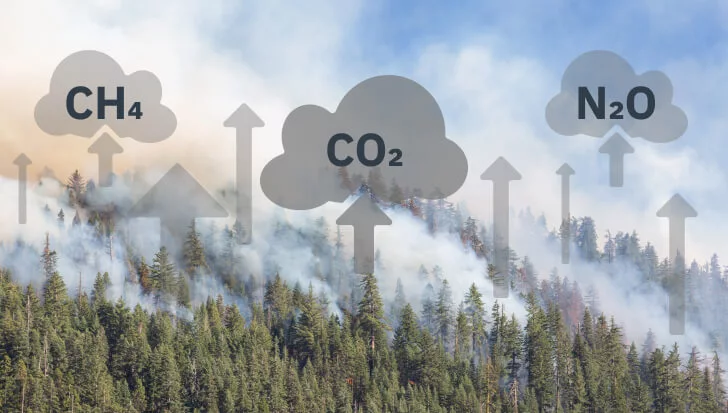
Methane
The share of methane in total greenhouse gas emissions is several times smaller than that of carbon dioxide. On the other hand, methane has 28 times the warming potential of carbon dioxide. Furthermore, CH4 causes the formation of ground-level ozone, a dangerous air pollutant that significantly shortens people’s lives all over the world.
How does deforestation relate to methane emissions? Floods occur more frequently on deforested lands; accordingly, they become waterlogged. Water prevents oxygen from reaching the soil, resulting in anaerobic fermentation, which produces methane as a byproduct.
Fortunately, the time CH4 can remain in the atmosphere is relatively short — only about 12 years. Therefore, lowering methane emissions through reduced deforestation will immediately impact the amount of this gas in the atmosphere.
Nitrous Oxide
Nitrous oxide is a potent greenhouse gas, warming the atmosphere 265 times faster than carbon dioxide while also harming the ozone layer. Agriculture, specifically the active use of nitrogen fertilizers, is the primary source of nitrous oxide emissions. Deforestation has almost no direct effect on this gas formation but rather serves as a precursor to converting forested areas to farmland.
Role Of Trees In Gas Processing
The role of forests in affecting the greenhouse gas composition of the atmosphere is enormous. Forests have a unique ability to absorb greenhouse gas emissions caused by human activity and produce oxygen in return. How do they do it? Through photosynthesis, leaves absorb carbon dioxide and water and use solar energy to convert them into oxygen and chemical compounds that feed the tree.
There is also the opposite process: forests are emitting greenhouse gas (carbon dioxide) in small amounts. It is known as respiration. However, photosynthesis exceeds respiration during a tree’s growth. In this way, excess carbon is sequestered and retained in the vegetative organs of trees (stems, leaves, and roots). Thus, forests prevent greenhouse gas accumulation in the atmosphere and act as a thermostat that protects the planet from overheating.
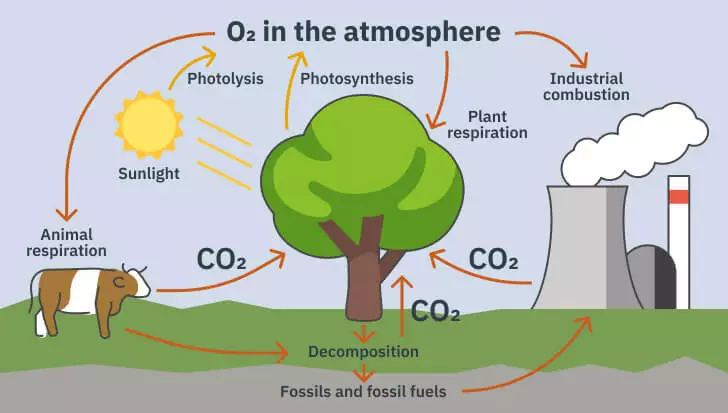
Deforestation Effects On Greenhouse Gases Emissions and Climate Change
The two main processes of tree participation in the gas formation and exchange cycle are directly related to the impact of deforestation on climate change. The first process is the absorption of CO2 emissions from manufacturing and other human activities. The second is the release of carbon stored in trees into the atmosphere, primarily as carbon dioxide, caused by deforestation. Forest preservation is advantageous in terms of both of these processes.
Deforestation contributes up to 11% of total GHG emissions yearly — nearly as much as all of the world’s vehicles combined.
Increased greenhouse gases due to deforestation provoke climate change. It results in storms, abnormal heat, droughts, and fires. Such climate changes devastate already-vulnerable forests, resulting in a dangerous cycle of shifts for the entire planet’s future.
Reducing deforestation, preserving existing forests, and planting new ones will help mitigate climate change and keep atmospheric and land temperatures within acceptable limits. As a result, it is critical to monitor the dynamics of greenhouse gas emissions, slow down deforestation, and implement other measures that will have an immediate and long-term positive impact.
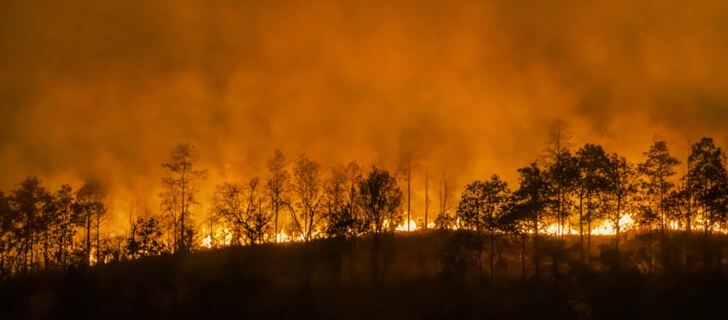
Main Causes Of Deforestation Contributing To The Greenhouse Effect
The clearing of forests is one of the main causes of increased greenhouse gases all over the world. Deforestation is tightly linked to the problems of urbanization, mining, and expanding agricultural land. The loss of tropical forests is the most visible regarding climate impact, and it can be traced back to the following factors:
- High-value cash crops. Soybean and palm oil deforestation are the most common. And as we all know, agricultural crop cultivation, including fertilizer use, increases greenhouse gas emissions.
- Cattle ranching, which further increases methane production.
- Wood production, for which strong growing trees with the greatest carbon dioxide absorption effect are typically cut down.
- Forest fires create greenhouse gases. Wildfires are a natural part of the carbon cycle and, under normal conditions, are not particularly harmful because young trees quickly absorb the carbon dioxide they emit. If, on the other hand, a forest is cut down and burned, all of its carbon is converted into carbon dioxide, increasing the greenhouse effect.
Peculiarities Of Greenhouse Gas Emissions In Major Deforestation Areas
The Amazon Basin in South America (mainly in Brazil), the Congo Basin in Central Africa, and Southeast Asia have the world’s largest rainforest areas. Deforestation extent and causes vary significantly across the three regions.
The Amazon Basin has the most rainforest area as well as the highest rate of deforestation. Brazil’s deforestation greenhouse gas emissions rise year after year, growing by 9.5% in 2020 , primarily due to increased Amazon deforestation.
The spread of peaty soils in Southeast Asia adds to deforestation risks. Thousands of tons of carbon dioxide previously trapped in the ground are released when trees are destroyed and peat bogs beneath them are drained. Farmers aggravate the problem of greenhouse gas emissions by burning dry peat, which accelerates methane release.
Deforestation rates are slightly lower in the Congo Basin, owing primarily to traditional shifting cultivation. So the forest can regenerate and absorb some previously released greenhouse gases in African forests.
While China and the United States — highly industrialized countries — are the world’s top two greenhouse gas emitters, Indonesia and Brazil are third and fourth, accounting for approximately 80% and 70% of deforestation emissions, respectively . It confirms that deforestation is one of the major contributory factors to the increase in greenhouse gases and should be the subject of a more conscious attitude and appropriate regulation.
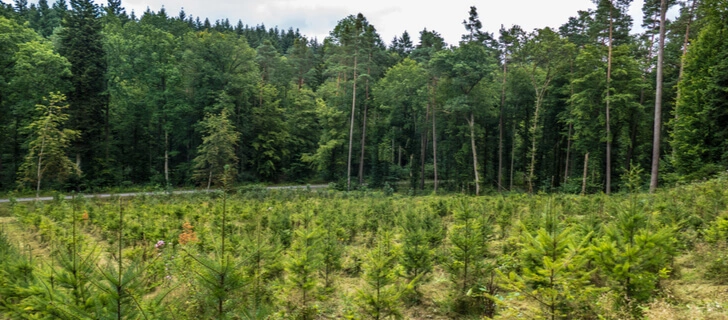
How To Reduce Deforestation And Reforest The Planet
Deforestation can and, thankfully, has already been reduced in some fields and areas. Moreover, in the future, newly planted forest cover can absorb greenhouse gases released by deforestation. Manufacturers, agricultural producers, politicians, and public organizations should band together and take the necessary steps at all levels, from global initiatives that unite all countries to specific regional strategies. How can improved forestry help reduce greenhouse gas emissions? Let’s look into it further.
Reduced Deforestation And Natural Reforestation
The highest carbon density is found in standing forests. This indicator then moves on to the soils and forest litter on which they grow. Therefore, preserving existing forests remains our best hope for conserving their vast carbon stores and carbon-absorbing potential, thereby saving the planet from drastic climate change.
Tree restoration, which includes reforestation — planting new trees and allowing the forest to regrow, is undeniably a necessary and effective method of mitigating the greenhouse effect. Even so, the trees grown in the last 19 years account for less than 5% of total carbon dioxide absorption by all forests. Of course, as the new trees grow, they store carbon dioxide much more efficiently. Yet, protecting primary and mature secondary forests is the crucial means of forest management decreasing greenhouse gas emissions and mitigating climate change for now.
Forest-Favouring Political Solutions
Several political approaches have yielded promising results in the fight against deforestation. Including local people in policy, particularly recognizing indigenous communities’ sovereignty over their lands, putting civil society pressure on corporate deforesters, and introducing transparency into supply chains are among the most potent strategies.
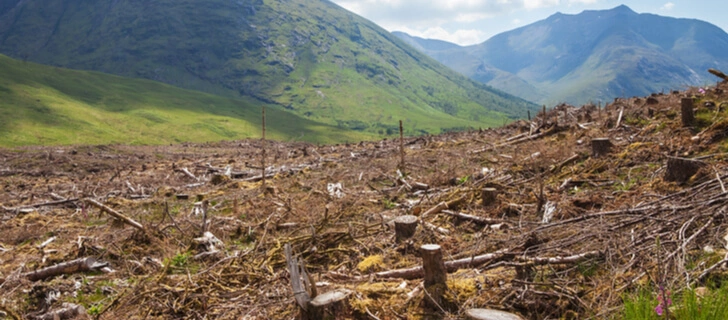
Effective international solutions are currently being initiated and implemented to help gradually reduce deforestation. In particular, the European Parliament introduced a proposal on deforestation-free products with the goal of reducing deforestation associated with agricultural land expansion. The need to reduce greenhouse gas emissions from deforestation and degradation of forests is also a major issue in developing countries. To improve their ability to save forests, REDD+ — the Reducing emissions from deforestation and forest degradation program — was established.
Other measures that governments should take to reduce deforestation and associated greenhouse gas emissions include:
- assessing deforestation greenhouse gas emissions;
- a systematic approach to incentives for reducing forest-based emissions;
- further improving forest governance in developing countries;
- policy options for reducing deforestation and forest-based greenhouse gas emissions;
- managing carbon markets.
Cutting-edge technologies, such as satellite monitoring, will help implement these sustainable forestry management approaches for controlling deforestation and reducing greenhouse gas emissions at all levels.
EOSDA LandViewer Solutions For Deforestation Detection
EOSDA LandViewer provides a set of tools that allow users to monitor forest loss, detect land cover change, and analyze vegetation dynamics using satellite imagery. With access to a multi-provider satellite archive, vegetation indices, and time-based analytics, users can examine both recent and historical changes in forested areas, making the platform a valuable resource for tracking deforestation over time.
Monitoring Forest Change With Satellite-Based Tools
EOSDA LandViewer’s change detection feature enables the identification of deforestation by comparing satellite images taken at different dates. It highlights changes in land cover, helping users pinpoint areas where tree cover has been removed or degraded. This is especially useful in regions where forest disturbances may not be immediately visible from the ground.
To understand long-term trends, users can rely on time series analysis, which allows tracking of vegetation indices, such as NDVI, across months or years. This reveals gradual processes like forest thinning, regrowth, or ongoing degradation that might otherwise go unnoticed. Combined with high-resolution imagery, it becomes possible to detect early signs of clearing, including small roads and scattered cut areas, often precursors to larger-scale deforestation.
The index change notification manager offers real-time alerts when vegetation index values drop significantly within a selected area of interest. This makes it easier to monitor forests continuously and respond promptly to new disturbances. For more complex landscapes, the clustering feature helps classify areas by spectral similarity, aiding in distinguishing forest from non-forest zones, transitional clearings, or regenerating areas.
Detecting Forest Loss in Alberta’s Oil Sands Region
One striking example of cumulative forest loss can be seen in Alberta, Canada, where industrial development has reshaped large portions of the boreal landscape. The Athabasca oil sands, located near Fort McMurray, have experienced ongoing forest removal due to surface mining and in-site extraction operations.
Since the early 2000s till 2013, more than 2 million hectares of forest have been cleared in Alberta. This trend continued between 2018 and 2025, with satellite imagery showing steady expansion of disturbed areas and fragmentation of surrounding habitats. Using EOSDA LandViewer’s analytical tools, such as change detection and time series analysis, it is possible to observe these transformations in detail, from initial clearing to long-term land use conversion.
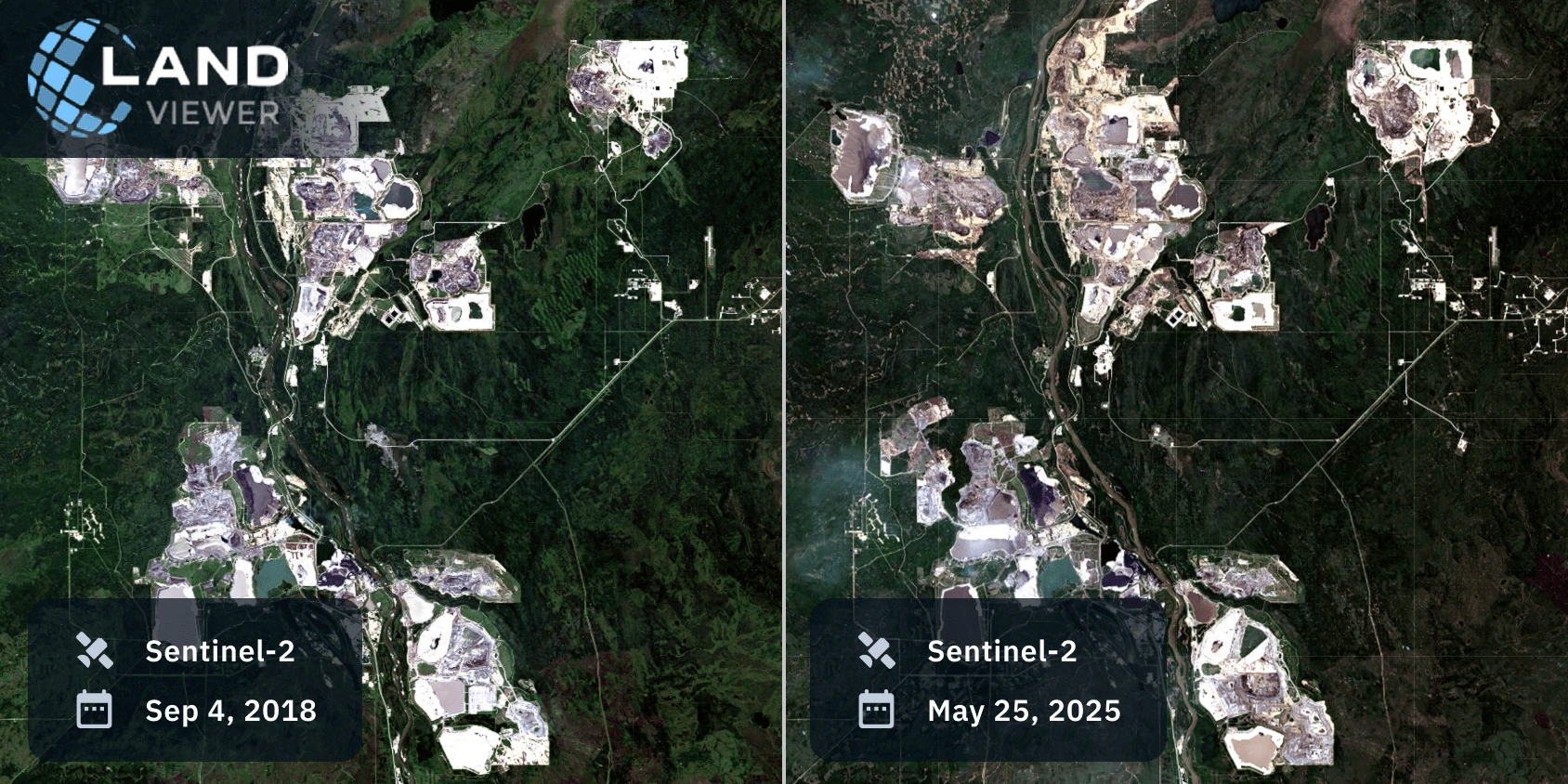
By analyzing NDVI values and vegetation trends over time, users can also assess how surrounding ecosystems are affected, including signs of stress or degradation beyond the immediate extraction zones. These insights can support impact assessments, environmental reporting, and decision-making on land use policy.
Deforestation-Free Future
The issue of global warming caused by increased greenhouse gas emissions has long been debated in scientific circles, but its scope has now reached such proportions that it requires decisive action at all levels. Unfortunately, there is no revolutionary solution that guarantees a significant reduction in greenhouse gas emissions right now. Nevertheless, the gradual decline in deforestation will cut down greenhouse gases and allow for future suspension and, hopefully, even reversal of global warming.
About the author:
Kateryna Sergieieva has a Ph.D. in information technologies and 15 years of experience in remote sensing. She is a Senior Scientist at EOSDA responsible for developing technologies for satellite monitoring and surface feature change detection. Kateryna is an author of over 60 scientific publications.
Recent articles

Analyze 2025 & Plan Your Best Year Yet: LandViewer Christmas Offer
It’s the most wonderful time of the year! The Christmas holidays are here, and so is your chance to analyze 2025 and plan a prosperous 2026 with more affordable Pro plans in LandViewer.

EOSDA Models Climate Change Impact On Sugarcane Yields
EOSDA modeled future temperature, rainfall, and other climate impacts on Veracruz sugarcane. The results help growers plan long-term adaptation strategies, including timing, varieties, and irrigation.

EOSDA LandViewer Black Friday Sale: Exclusive Offers & Giveaway
This Black Friday, LandViewer offers new users the chance to save on monthly plans, get extra months with yearly subscriptions, and participate in a free annual plan giveaway.

